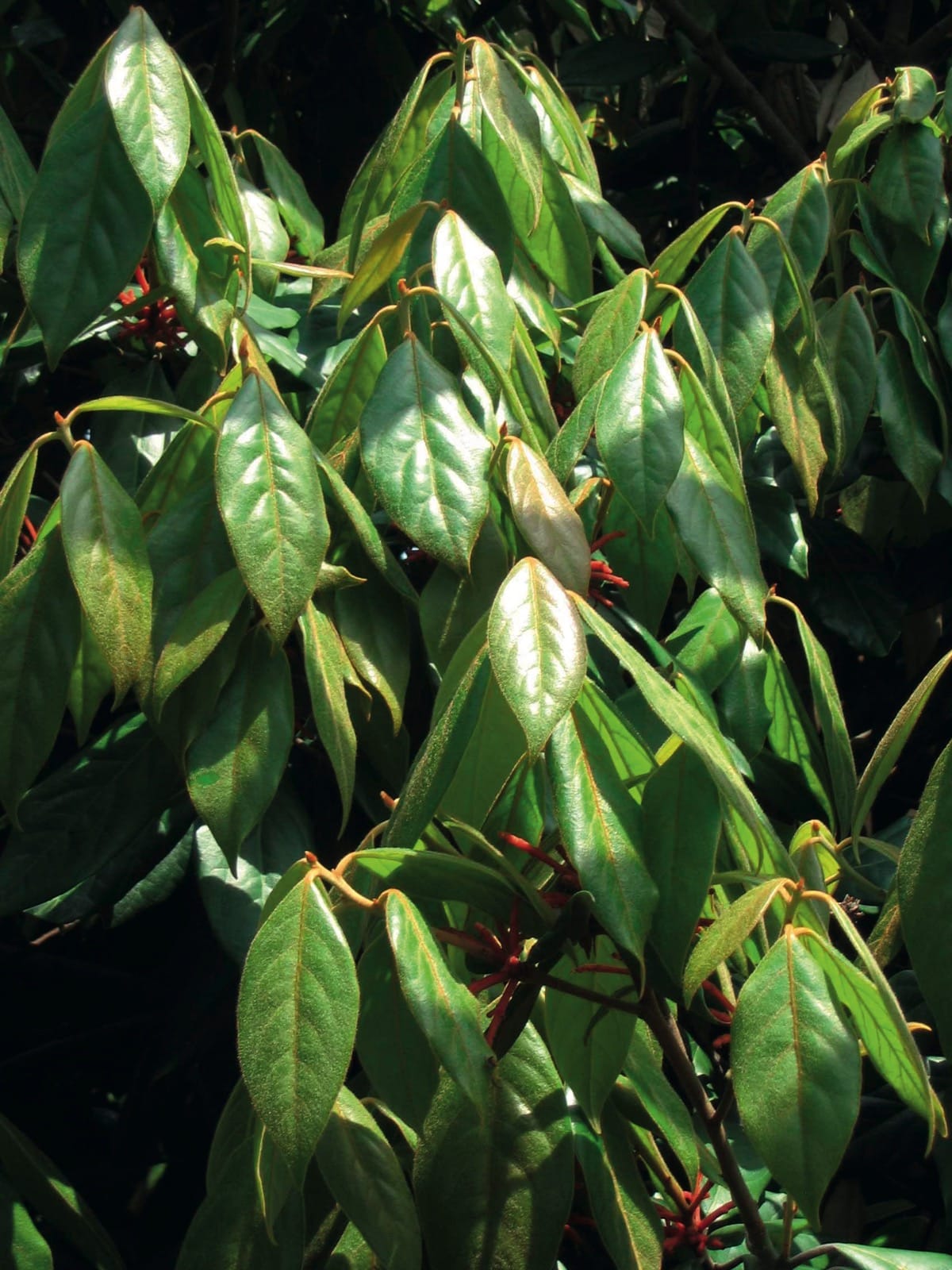Persea pedunculata
Credits
Article from New Trees by John Grimshaw & Ross Bayton
Recommended citation
'Persea pedunculata' from the website Trees and Shrubs Online (treesandshrubsonline.
Genus
Synonyms
- Actinodaphne pedunculata (Bl.) Meisn.
- Machilus grijsii Hance
- Persea grijsii (Hance) Kosterm.
- P. velutina (Champ. ex Benth.) Kosterm.
Shrub or tree (2–)4–8 m. Young growth so densely covered in velvety, ferruginous tomentum, as to obscure surface details completely. Branchlets dark brown, tomentum gradually eroding over several years, leaf scars prominent. Leaves evergreen, leathery, 4.5–13(–17) × 2–5 cm, ovate to elliptic, occasionally obovate, upper surface matt and glabrous, lower surface densely to sparsely tomentose, 4–12 secondary veins on each side of the midrib, margins entire, apex acute to acuminate; petiole 0.5–2 cm long, tomentose. Inflorescences axillary to subterminal, fascicled with six to eight brightly red-coloured branches, 2.5–6 cm long with 3–12 flowers. Flowers campanulate, 0.6–1 cm diameter; tepals six, yellow, pubescent outside. Berry globose, black, 0.8–1 cm diameter. Flowering November to April, fruiting January to June (China). Kostermans 1974. Distribution CHINA: Fujian, Guangdong, Guangxi, Hong Kong. Habitat Moist evergreen forest. USDA Hardiness Zone 7–8. Conservation status Not evaluated. Illustration NT557. Taxonomic note This species is usually grown under the name Persea grijsii, though Kostermans (1974) placed it in synonymy with P. pedunculata.
In notes on the hundreds of trees observed (JMG) for this book, the only time the description ‘gorgeous!’ appears is on the sheet for Persea pedunculata, seen at the JC Raulston Arboretum in 2006 (labelled P. grijsii, as it is most likely to be in horticulture). This gorgeousness derives from the amazing beauty of the silky hairs covering the new growth, complemented by the bright orange-red of the inflorescence branches (even after the flowers had fallen). The tree itself is a multistemmed specimen up to about 2.5 m tall, grown from seed received from Hangzhou Botanical Garden in 1988–1989 (JC Raulston Arboretum records). Situated in the shelter of the Lath House it is not exposed to the fiercest of winter conditions, but is evidently able to withstand some frost. The species does not seem to be widely grown as yet, although it is in cultivation at Cistus Nursery, but it is certainly an important one to watch out for.

